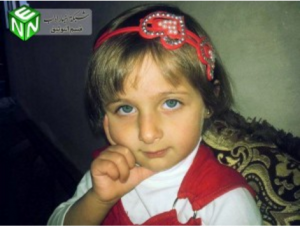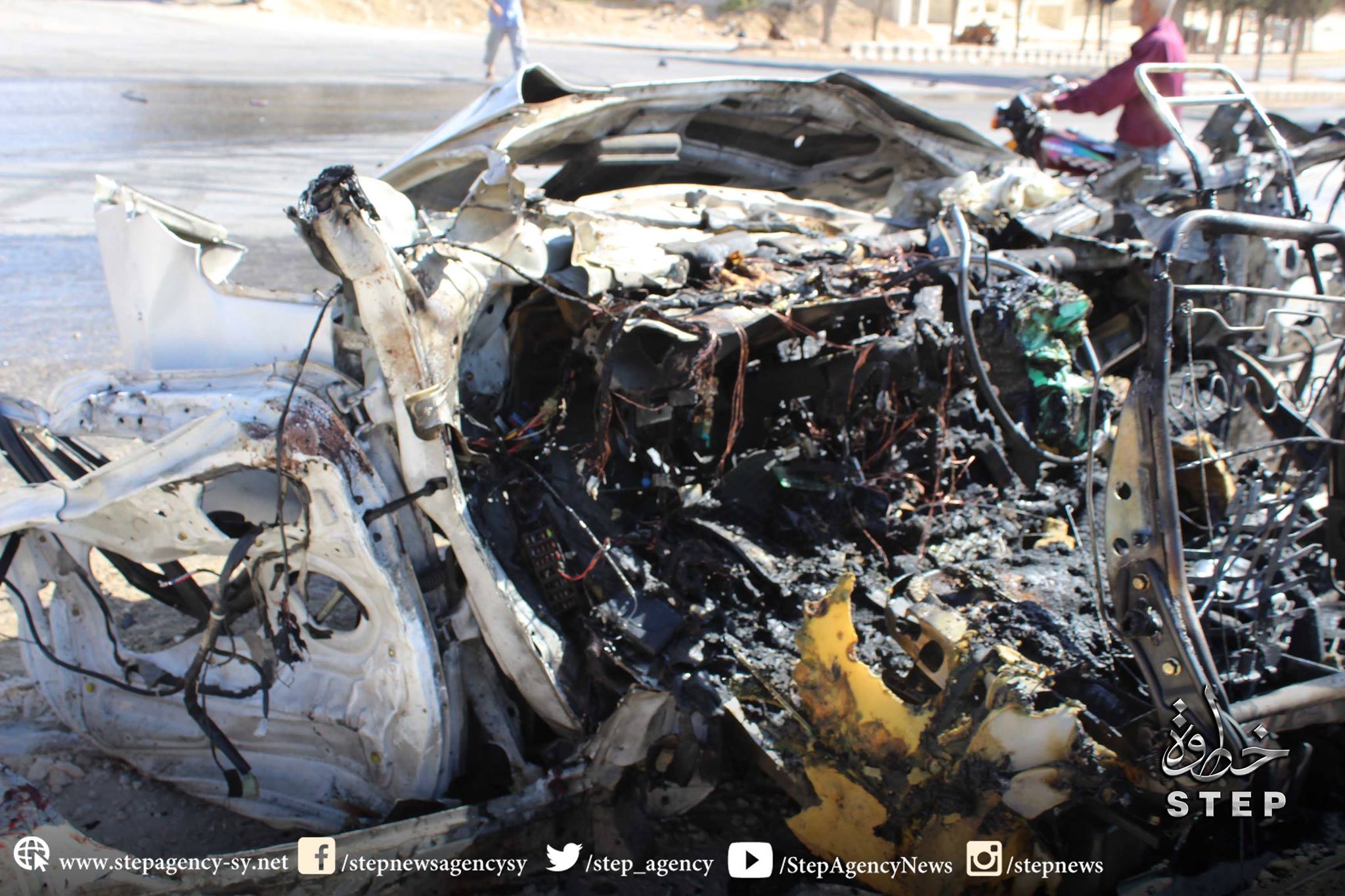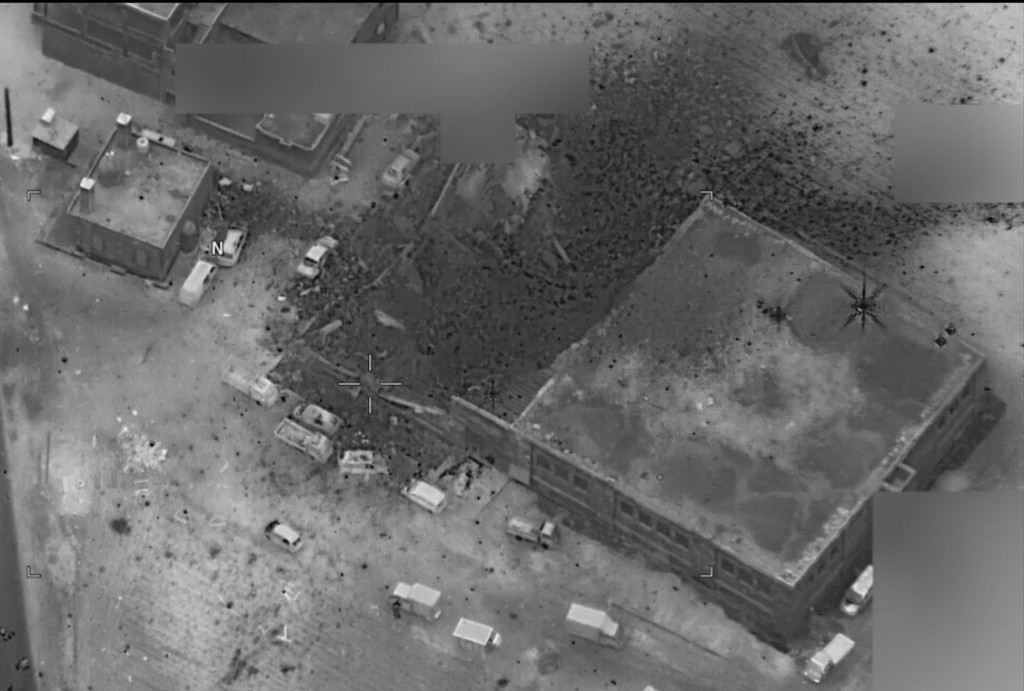What began as a unilateral war against Al Qaeda may see the United States embroiled in Syria’s affairs long after ISIL’s defeat

The unilateral American shadow war against al Qaeda-linked militants in Syria is now in its 30th month. Unlike the anti-Islamic State campaign, where the United States releases daily strike reports, the war against al Qaeda is less transparent, receives less media attention, and involves both the US military and intelligence apparatus. What began as a narrow mission in Syria — targeting al Qaeda terrorists allegedly focused on international attacks — has in the past six months expanded in both scope and intensity, according to local reports and interviews with US officials.
Outside the headlines, this war is also causing a steadily increasing death toll among Syrian civilians. One of the latest strikes in the long-running US campaign occurred on March 16th, when US drones struck a mosque complex in the town of al-Jinah, in northern Syria. The United States says it is investigating the attack but insists it didn’t hit a mosque. To the incredulity of locals, it claims to have instead struck a nearby building where “an al Qaeda in Syria meeting” was taking place. One witness told the local outlet Smart News: “[T]his is a praying center … peaceful civilians praying. I am one of them, there are no terrorists here.”

Rescuers work to free victims after a March 16th US drone strike in al-Jinah, Syria. Screenshot from video by Moaz Alshami Shada
President Barack Obama had laid the groundwork for increased strikes against al Qaeda last fall, as his administration broadened the definition of who was a legitimate target in northern Syria. These strikes have continued with a similar intensity since President Donald Trump took office. Because of this escalation, Washington now finds itself ramping up to fight an ambiguously defined opponent that is deeply enmeshed in the opposition to President Bashar al-Assad’s regime. The surge in civilian casualties, meanwhile, risks further antagonizing Syrians towards the United States, thus creating a vicious cycle that risks extending the 16-year US ‘War on Terror’ far into the future.
During the past 30 months, Airwars researchers have tracked more than 30 apparent unilateral American strikes, almost all in the rebel-held northwestern Idlib province. Using the lowest estimate for each incident, these strikes have likely killed at least 91 civilians. The real strike and overall casualty numbers are probably far higher. First, while the United States does publicize some unilateral strikes — as it did for six strikes in January — others have gone unreported, including drone attacks apparently carried out by the CIA. Secondly, it is difficult to properly attribute some strikes, such as a February 7th strike in Idlib city that reportedly left two dozen civilians dead but has also variously been blamed on Russia and the Syrian regime. The Airwars data set includes all strikes publicly acknowledged by US officials, as well as other strikes that we believe are likely to have been carried out by the United States.
Nevertheless, the trend is clear: The United States is escalating its unilateral air war in Syria. More than half of the 35 likely US strikes that we have been able to clearly source have occurred in the past six months. Though these operations have been largely obscured by the ongoing and massive military campaigns in Mosul and Raqqa, they also seem poised to increase in the weeks and months ahead.
Opening salvo

A young girl Basmala, one of 13 civilians reported killed in a US cruise missile attack on September 23rd, 2014. (Via Syrian Network for Human Rights)
The first US airstrikes in Syria occurred on September 23rd 2014. According to locals in the town of Kafr Daryan, the target of the attack that night were members of the Syrian affiliate of al Qaeda, known then as Jabhat al-Nusra or Nusra Front. Along with a number of fighters, at least 13 civilians reportedly died, including a husband, wife and their two children.
US officials said the cruise missiles that landed in Kafr Daryan were intended for a special cell within the Nustra Front planning attacks abroad, which they dubbed “the Khorasan Group.” The bombings marked the start of intermittent strikes against al Qaeda in Syria that have continued ever since, in parallel to the better-known and much larger coalition campaign against the Islamic State.
In 2014, the United States took pains to make clear that it was not striking all Nusra Front targets, but instead those it identified as intent on attacking the West. Likewise, it maintained that those it struck were not focused on defeating Assad. Less than two months after the Kafr Daryan attack, U.S. forces carried out fresh strikes against five more targets in Idlib. In a news release sent out the day after one of those strikes in November, CENTCOM stressed that it was only hitting the Khorasan Group, which it defined as “a network of Nusrah Front and al-Qa’ida core extremists who share a history of training operatives, facilitating fighters and money, and planning attacks against U.S. and Western targets.”
“These strikes … did not target the Nusrah Front as a whole,” the US military release continued. “They were directed at the Khorasan Group whose focus is not on overthrowing the Assad regime or helping the Syrian people.”

Likely remnant of a cruise missile fired at targets in Kafr Daryan. (Via Amnesty International).
Wider goals
More than two years later, the United States no longer refers to the Khorasan Group, whose core members have allegedly been killed. Though Jabhat al-Nusra renamed itself Jabhat Fateh al-Sham and claims to have split with al Qaeda in July 2016, the United States continues to target its fighters, insisting that any changes have been merely cosmetic and the group’s links to the international terrorist group remain intact. James Clapper, then Director of National Intelligence, called the Nusra name change a “PR move … to create the image of being more moderate.”
A UN counterterrorism official who spoke with Airwars gave a similar account: “It was just a rebranding. … [T]hey thought ‘oh no, a lot of people don’t like us because they think we were associated with al Qaeda.’” Since January, Jabhat Fatah al-Sham operates under the umbrella group Hayat Tahrir al-Sham, which it founded, and remains headquartered in Idlib.
A former senior official in the Obama White House told Airwars that the administration began paying greater attention to the Nusra Front in early 2016, and by the fall had devoted more assets to combating it, including drones that had previously been used against the Islamic State. “That was predicated by a series of intelligence products that frankly spooked a lot of people,” the official said. “While the national focus had been on [the Islamic State], and the fear had been on an [Islamic State] attack, the sense was the near-term threat to the homeland and that threat that had the potential to grow the most in the coming months and years was posed by Nusra.”
In November 2016, the Washington Post reported that the White House had by now given the Pentagon “wider authority and additional intelligence-collecting resources to go after al-Nusra’s broader leadership.” Significantly, Obama ordered that all Nusra leaders — not just so-called legacy members of al Qaeda or those involved in planning external attacks — were to be targeted, an account confirmed to Airwars by two former Obama administration officials.
Current and former US officials insist that the recent increase in strikes is in large part a product of greater intelligence and knowledge of plots. But this period, beginning last fall, also coincides with significant and strategic gains made by the Syrian regime and its allies — ultimately to the point that officials in Washington no longer assumed Assad would be pushed from power. The Obama doctrine of supporting certain opposition groups against the Assad government did not yield the desired results, particularly after Russia intervened in Syria in late 2015. It was only a year later, when the opposition appeared to have little chance of taking the entire country, that the United States significantly escalated its campaign against al Qaeda. As one administration official told the Washington Post, the White House could no longer go along with what it called “‘a deal with the devil’ whereby the United States held its fire against al-Nusra.”
“Before, the Americans would have to really sell the idea of targeting opponents of Bashar al-Assad, or groups that were fighting [him],” according to Hassan Hassan, senior fellow at the Tahrir Institute for Middle East Policy. With the fall of Aleppo in late 2016, he added, “[T]here was a tacit understanding that the game was over.”
Unclear authorization
All US military strikes against alleged al Qaeda in Syria have been carried out under the 2001 Authorization for Use of Military Force (AUMF) passed by Congress just days after the 9/11 attacks. The Pentagon says the same is true of the anti-Islamic State campaign, even though that group broke with and has fought al Qaeda. In Syria, the United States makes use of an expansive definition of so-called associated forces of al Qaeda — a phrase that was not included in the AUMF, but that has been adopted by the Pentagon and successive U.S. administrations. More than 15 years after 9/11, it could now apply to thousands of fighters in the Syrian civil war, many of whom may care little about striking the West.
Michael Hayden, former head of both the National Security Agency and CIA — and a prominent backer of drone warfare — says the AUMF is no longer fit for its original purpose. And he faults Congress for failing to redefine these war powers earlier. “The public debate seems to have moved well beyond it,” he told Airwars in a telephone interview. “There is no political space in which to have this discussion right now with everything else that is going on.”
In January, the Pentagon issued a news release following two attacks in Idlib targeting senior al Qaeda figures that may have subtly reflected the expanded nature of the campaign. “We are confident,” the release said, “these strikes will degrade al-Qaida’s ability to direct operations in Syria.” Jabhat Fateh al-Sham is estimated to have well over 10,000 fighters, so a campaign against the entire organization would be radically different from the initial effort to disrupt a cell of al Qaeda terrorists planning international attacks.
In response to a question from Airwars, Pentagon spokesman Eric Pahon insisted that “not much has changed,” and pointed out that the same January release still referenced al Qaeda’s commitment “to carrying out terrorist attacks against the United States and West.”
Asked to clarify what groups — and how many individuals — are now within the scope of the American campaign, the Pentagon said it would not release intelligence information and only stated, “We do target al Qaeda in Syria.”

Remains of a vehicle targeted by the Coalition in Idlib on October 17th 2016. The attack also reportedly injured three civilians (via Step News)
Insurgents vs. terrorists
Are elements in al Qaeda’s Syrian affiliate planning attacks abroad? Those who have watched the civil war for years say “yes,” but that it’s complicated.
“Intelligence suggests that al Qaeda in northwest Syria is engaged in putting together the infrastructure, recruiting necessary fighters and putting in place a plan that could one day be activated to conduct attacks,” says Charles Lister, a senior fellow at the Middle East Institute and author of The Syrian Jihad.
Lister doubts, however, that this planning is occurring within the context of Hayat Tahrir al-Sham, the umbrella group that includes a broad subset of the Syrian opposition. He and other analysts now worry that the United States risks sparking a war with the broader anti-Assad movement.
“The announcement of Hayat Tahrir al-Sham [HTS] almost certainly means that large new sections of north Syria’s rebels are considered al Qaeda-linked, and thus included in that target set,” said Sam Heller, a fellow at the Century Foundation who researches the Syrian civil war. “And with every passing day, HTS assimilates more of the northern opposition. Whether the United States will strike them remains to be seen.”
In that context, the March 16th strike on part of a religious complex in the town of al-Jinah has raised deep concerns — not only for its high civilian toll, but for the precedents it sets for the type of targets the United States is willing to hit. While locals described the building as a recently constructed mosque, US officials insisted to Airwars that the mosque was not hit, which they said was a short distance from the actual target.
Residents, however, say the larger structure that was struck was also a part of the mosque complex — a description supported by open-source imagery — where more than 200 people were meeting for religious teaching. Casualty figures have varied, from 37 to more than 60 victims.

A post-strike image released by the Pentagon. US officials claim the structure hit was not a mosque — locals say otherwise.
Pahon told Airwars that the airstrike target was “an Al Qaeda in Syria meeting location … killing several terrorists. Intelligence indicated that Al Qaida leaders used the partially-constructed community meeting hall as a gathering place, and as a place to educate and indoctrinate Al Qaida fighters.”
Discussing the strike, the UN counterterrorism official said the sheer number of people in the building meant that regardless of the presence of al Qaeda leaders, the strike was reckless — reminiscent of previous airstrikes since 9/11 that have worsened animosity toward the United States.
“It’s precisely the wrong approach to try to prevent terrorists in the future,” the official said.
Photo shows the remnants of a bomb used in the airstrike on the ‘Umar ibn Al-Khaṭṭāb mosque in the rebel-held village of al-Jinā, w-Aleppo. pic.twitter.com/aGsqMjcWIJ
— Sakir Khader (@sakirkhader) March 16, 2017
Charles Lister, who contends that the United States has thus far been effective at striking a balance in Syria by only going after senior al Qaeda leadership, said no evidence had yet emerged of any targets that warranted the al-Jinah strike.
“That nothing at all has come out still to this point strengthens the accusation that this may have been a case of mistaken target selection,” he said. “Whatever the case, the damage is done — as far as genuinely moderate Syrians within the opposition are concerned, the al-Jinah incident demonstrated that there was little difference between the US and the Assad regime or Russia.”
From Obama to Trump
The last unilateral strike of the Obama administration underscored just how much the target set in Syria had expanded during his presidency. On January 19th, a US Air Force B-52 bomber — along with other aircraft including drones — struck west of Aleppo, reportedly killing more than 100 fighters in what the Pentagon described as an al Qaeda training camp. It was one of a number of strikes that month, which the United States claimed had between them killed at least 150 terrorists.
Heller said it appeared the camp was being used jointly by Jabhat Fateh al-Sham and a smaller number of fighters from a separate group called the Nour al-Din al-Zinki Movement. The two groups had grown steadily closer during the past year; a little more than a week after the strike, Zinki would officially join Hayat Tahrir al-Sham.
This expanding definition of which groups represent legitimate targets for a strike may be poised to grow even further during the Trump administration. The new American president, who during the election campaign promised to “bomb the shit” out of the Islamic State, has asked the Pentagon to consider relaxing the rules of engagement in Syria and Iraq as part of the campaign against that group. This month, Trump authorized the CIA to carry out its own drone strikes in Syria.
HUGE news via source:
Al-Qaeda deputy leader Abu al-Khayr al-Masri has been killed in a U.S drone strike near Al-Mastoumeh in #Idlib. pic.twitter.com/RORT6sU8Sj
— Charles Lister (@Charles_Lister) February 26, 2017
Images posted after a US strike which reportedly killed senior al-Qaeda leader Abu al-Khayr al-Masri. Subsequent reports indicated the strike was carried out by the CIA.
For the moment, US military personnel remain mostly focused on the Islamic State and the dual campaigns to capture Mosul and Raqqa. Recent weeks have seen the highest reported civilian casualties of those operations. In March alone, more than 1,700 civilian casualty allegations have been lodged against the US-led coalition in both Iraq and Syria. Many of these incidents are contested, but a number of deadly strikes, including a raid in west Mosul that reportedly left more than 100 dead, have raised serious questions about how Coalition strikes are approved.
The White House has not said whether it will free up even more resources to attack al Qaeda’s Syrian affiliate with a wider air war. That said, the campaign shows every sign of continuing to grow. In Yemen, the Trump administration and the Pentagon have already overseen an unprecedented increase in airstrikes, targeting what they claim are al Qaeda militants — a signal, perhaps, of their intent to pursue the group with greater intensity in Syria and elsewhere.
But as in Yemen, progress has been fleeting. As the Assad regime’s hand has strengthened, so has Jabhat Fateh al-Sham’s. The United States, in effect, is escalating its campaign against al Qaeda only when the group has achieved an outsized representation in a diminished opposition. The war — a different front, but part of a 16-year-old campaign — may just be beginning.
“Hayat Tahrir al-Sham is much stronger than people think,” Hassan said. “They are more organized than other groups. They are in tune with the local sentiment, they know people want to focus on Bashar al-Assad. … It is very similar to the beginning of the ISIS war.”